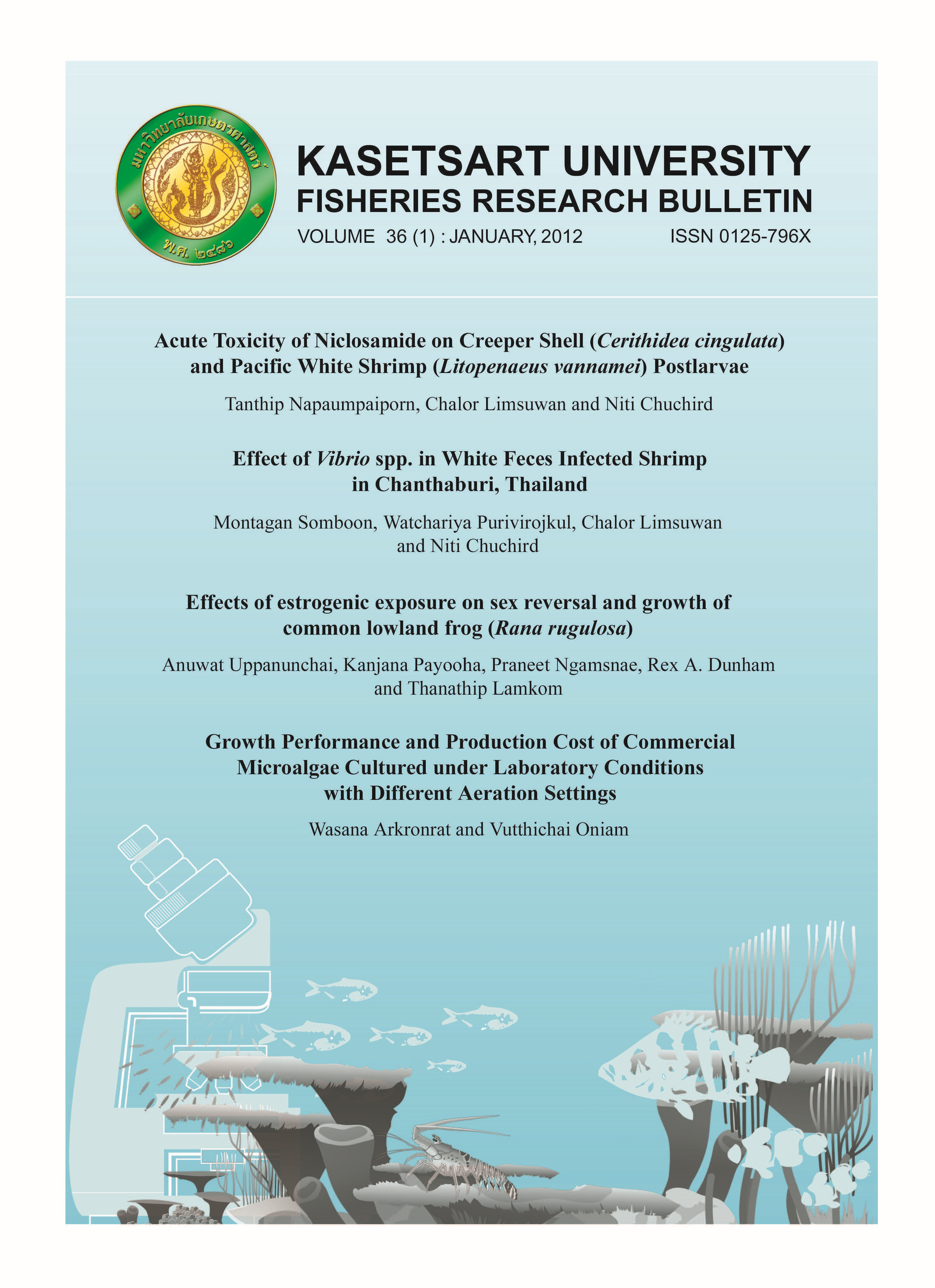Effect of Vibrio spp. in White Feces Infected Shrimp in Chanthaburi, Thailand
Main Article Content
Abstract
The shrimp culture sector in Thailand has been facing the threat of white feces syndrome which severely affected the area throughout the cultivation period in 2010. This study investigated the cause of white feces disease in farm-reared Pacific white shrimp (Litopenaeus vannamei) in Chanthaburi province, eastern Thailand from June to December 2010. A total of 12 grow out ponds were studied, of which 6 were affected by white feces syndrome and 6 were unaffected. Estimations of Vibrio spp. and total count of bacteria were conducted from the haemolymph and intestine of diseased and healthy shrimp using thiosulfate citrate bile salts sucrose agar (TCBS agar) for Vibrio spp., and tryptic soy agar (TSA) for total bacteria. Identification of Vibrio spp. was conducted by using API-20E test strips. Histological examination was also conducted on the hepatopancreas and intestine of shrimp. Results showed that total bacteria and Vibrio spp. found in haemolymph and intestine were significantly higher in diseased shrimp (P < 0.05) than in healthy shrimp. Seven species of Vibrio spp. were identified: V. vulnificus, V. fluvialis, V. parahaemolyticus, V. alginolyticus, V. mimicus, V. cholerae (non01) and Photobacterium damselae (V. damselae). Gregarine parasites were found in only 2% of all sampled shrimp (diseased and healthy). Histopathological examination in severely affected shrimp revealed diffused haemocyte encapsulation and dilated hepatopancreatic tubules accompanied by necrosis.


